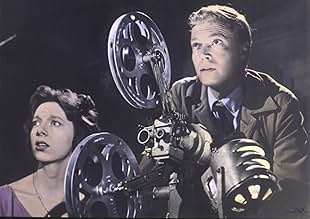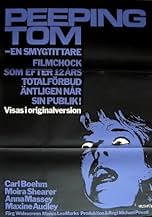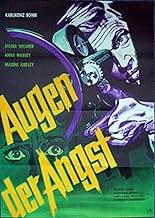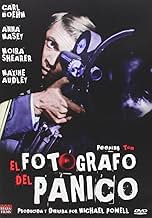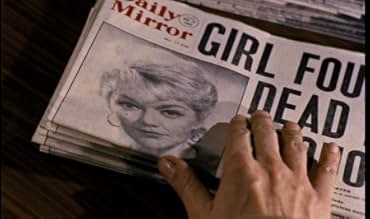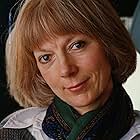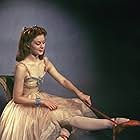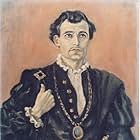A young man murders women, using a movie camera to film their dying expressions of terror.A young man murders women, using a movie camera to film their dying expressions of terror.A young man murders women, using a movie camera to film their dying expressions of terror.
- Awards
- 1 win total
Karlheinz Böhm
- Mark Lewis
- (as Carl Boehm)
Shirley Anne Field
- Pauline Shields
- (as Shirley Ann Field)
John Barrard
- Small Man
- (uncredited)
William Baskiville
- Policeman
- (uncredited)
Keith Baxter
- Det. Baxter
- (uncredited)
Jack Carter
- St John's Medic
- (uncredited)
Linda Castle
- Guest at Birthday Party
- (uncredited)
John Chappell
- Clapper Boy
- (uncredited)
Storyline
Did you know
- TriviaThe critical mauling and public outcry about the film resulted in it being pulled from British cinemas after just five days.
- GoofsThe makeup used for Lorraine's lip disfigurement changes markedly between shots.
- Quotes
Mrs. Stephens: [referring to Mark] I don't trust a man who walks quietly.
Helen Stephens: He's shy.
Mrs. Stephens: His footsteps aren't. They're stealthy.
- Crazy creditsThere are no closing credits of any kind. The film simply stops.
- Alternate versionsIn the scene where Mark is about to kill the 'model' "Milly" she lays on the bed bare-breasted. For the US version they had to re-shoot with her breasts covered.
- ConnectionsFeatured in Movies Are My Life (1978)
Featured review
Peeping Tom is a philosophical movie that investigates the nature of perception, rather than an edge-of-the seat thriller. The phrase "snuff films" hadn't even been invented in 1960, nor did videotape cameras exist, so the movie was far in advance of its time. You might be disappointed if you looking for pure excitement, you have to be willing to examine deeper issues.
Carl Bohm is perfect in the role of the killer, and his faint German accent (which might be interpreted as a. psychogenic speech defect) adds to the creepiness of his character. Instead of an over-the-top maniac (Jack Nicholson, are you listening?), he portrays a frightened and insecure little person who can only relate to the world by looking at it, preferably through a camera lens. It is easy to condemn him for his obsession with peeping, but -um- aren't we doing the same thing by watching this movie, or any movie? The most interesting movies are those that provoke such questions in us. This aspect also helps explain why Peeping Tom was so fiercely condemned in 1960.
(The scenes between Bohm and Massey remind me of those between Gustav Diesel and Louise Brooks in the last part of Pandora's Box (1928), and you can bet the Michael Powell was familiar with Pabst's work.)
The idea that scrutiny = punishment was explored by Michel Foucault in his book Surveiller et Punir, which I happened to read a long time ago. We will be finding out more about this as the "National Security State" draws closer. Anyway, here you have a powerless little guy who tries to feel the same sense of control by turning his camera - literally - into a murder-weapon. The technical details of this contrivance seem unrealistic, but the symbolism is so powerful they scarcely matter.
The hard-edged sound of late-50s cool jazz works very nicely in setting the atmosphere, similar to Town Without Pity (1960). Nowadays we tend to think of that era as idyllic, so its useful to remind ourselves of the dark edges that existed.
Carl Bohm is perfect in the role of the killer, and his faint German accent (which might be interpreted as a. psychogenic speech defect) adds to the creepiness of his character. Instead of an over-the-top maniac (Jack Nicholson, are you listening?), he portrays a frightened and insecure little person who can only relate to the world by looking at it, preferably through a camera lens. It is easy to condemn him for his obsession with peeping, but -um- aren't we doing the same thing by watching this movie, or any movie? The most interesting movies are those that provoke such questions in us. This aspect also helps explain why Peeping Tom was so fiercely condemned in 1960.
(The scenes between Bohm and Massey remind me of those between Gustav Diesel and Louise Brooks in the last part of Pandora's Box (1928), and you can bet the Michael Powell was familiar with Pabst's work.)
The idea that scrutiny = punishment was explored by Michel Foucault in his book Surveiller et Punir, which I happened to read a long time ago. We will be finding out more about this as the "National Security State" draws closer. Anyway, here you have a powerless little guy who tries to feel the same sense of control by turning his camera - literally - into a murder-weapon. The technical details of this contrivance seem unrealistic, but the symbolism is so powerful they scarcely matter.
The hard-edged sound of late-50s cool jazz works very nicely in setting the atmosphere, similar to Town Without Pity (1960). Nowadays we tend to think of that era as idyllic, so its useful to remind ourselves of the dark edges that existed.
- Prof_Lostiswitz
- Dec 6, 2003
- Permalink
- How long is Peeping Tom?Powered by Alexa
Details
- Release date
- Country of origin
- Language
- Also known as
- Face of Fear
- Filming locations
- Newman Arms - 23 Rathbone Street, Fitzrovia, London, England, UK(Pub below Dora's flat)
- Production company
- See more company credits at IMDbPro
Box office
- Budget
- £135,000 (estimated)
- Gross US & Canada
- $36,598
- Gross worldwide
- $99,129
- Runtime1 hour 41 minutes
- Aspect ratio
- 1.66 : 1(original & negative ratio / European theatrical ratio)
Contribute to this page
Suggest an edit or add missing content





